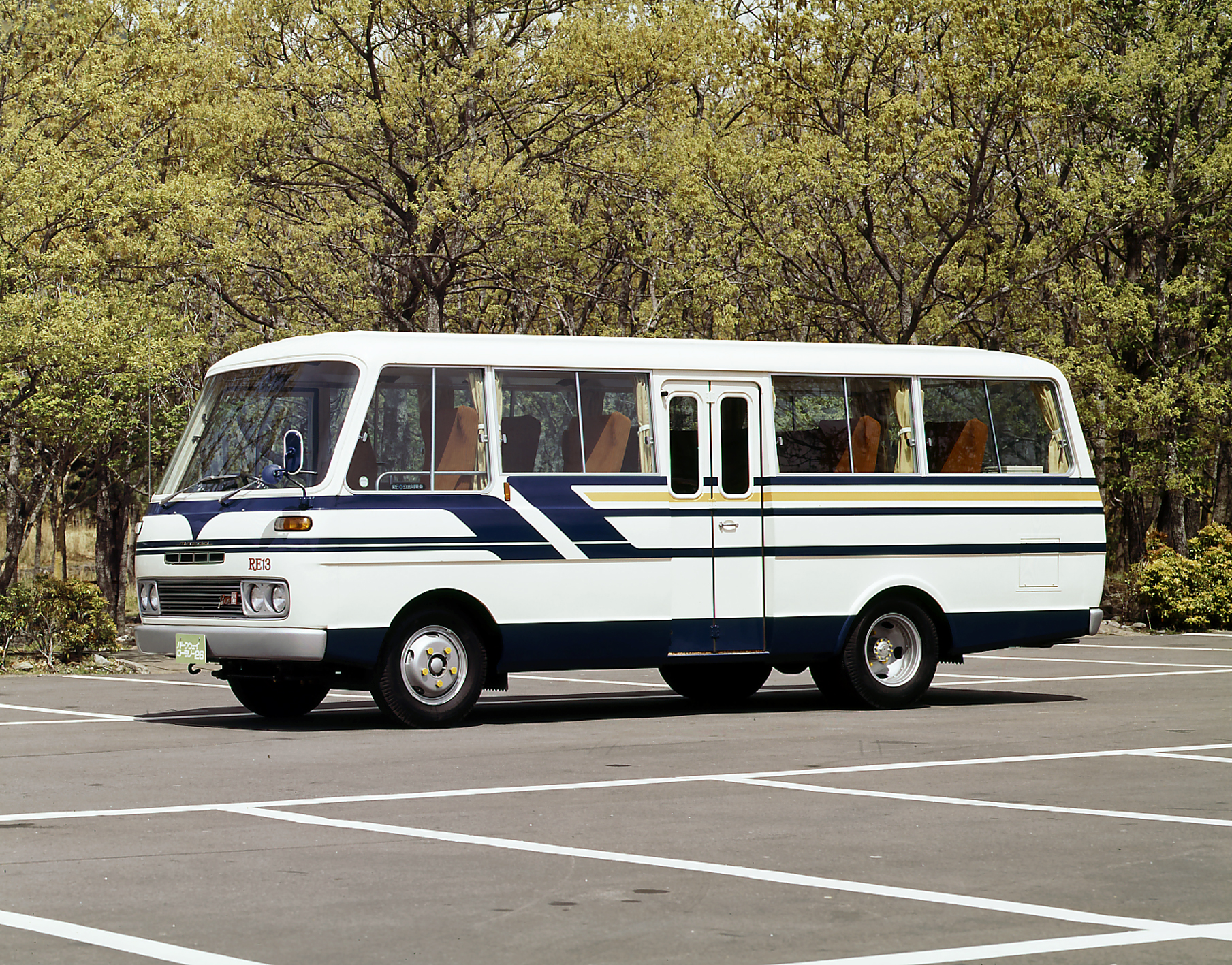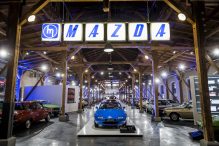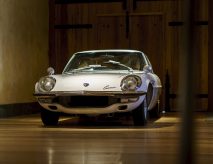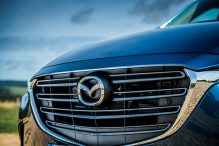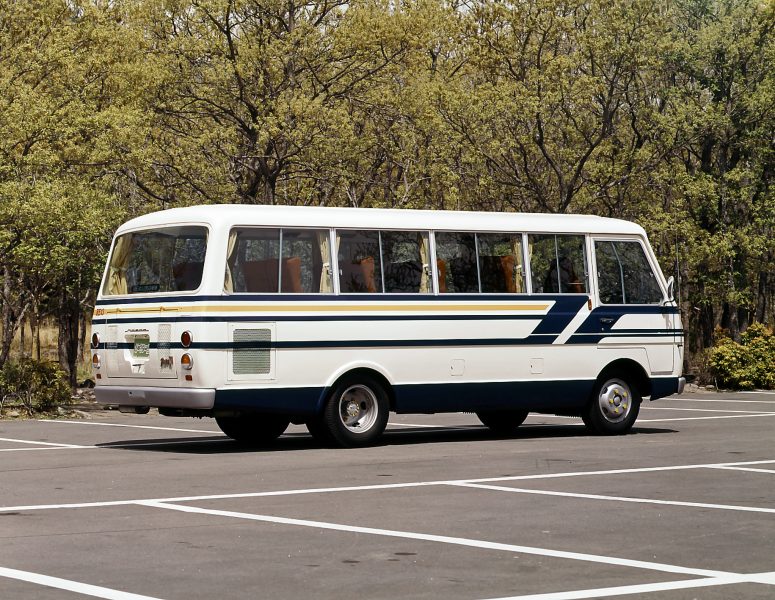
Mazda is famous for its rotary powered sports cars: The Mazda RX-7 was a global best seller and a successful racing car. Other famous rotary powered cars include, of course, the Le Mans winning 787B racing car and the stunning RX-8 with its freestyle doors. However, there is one unicorn among Mazda’s rotary powered sedans, station wagons and coupés that stands out from its siblings: A minibus.
Mazda and the minibus
Mazda began building minibuses in 1960. Intended to provide transportation for small businesses, hotels, schools and restaurants, the Mazda Light Bus quickly became famous for its qualities and great comfort. Plus, due to the freestyle design of the rear doors, the early version also served as an ambulance. The Light Bus evolved over the forthcoming years, making its debut as a 25-seater for general public use in 1965. A year before that, it had already amazed the audience of the 1964 Tokyo Motor Show with its super futuristic design that was even carried over to the production version.

With rising demand for minibuses, Mazda launched a fully redesigned and renamed version of the little workhorse in 1972 and the Mazda Parkway 26 was born (the 26 indicating the maximum number of passengers). The Parkway had that certain something: Being built to a high safety standard and giving passengers the comfort and convenience of a radio, powerful heating for cold winters, as well as a soft ceiling and other refinements, it made their time onboard feel extra premium.
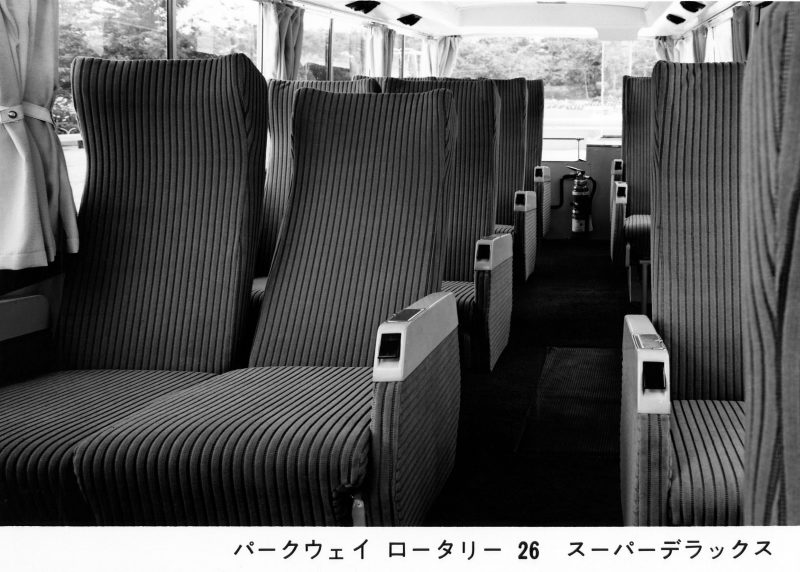
A rotating heart
Up to this point, all Mazda buses were powered by piston engines. But when – and why – did Mazda create a rotary powered bus? This was a time when pollution was becoming a worldwide problem. So Mazda decided to introduce the environmentally friendly rotary engine to its Parkway programme in 1974, creating the unique Mazda Parkway Rotary 26. The low-emission 13B rotary engine, famous from the Mazda RX-3 sports car, was clearing Japan’s exhaust gas emission regulations by a wide margin while delivering exceptional performance and maintaining all the quietness and smoothness of the rotary.
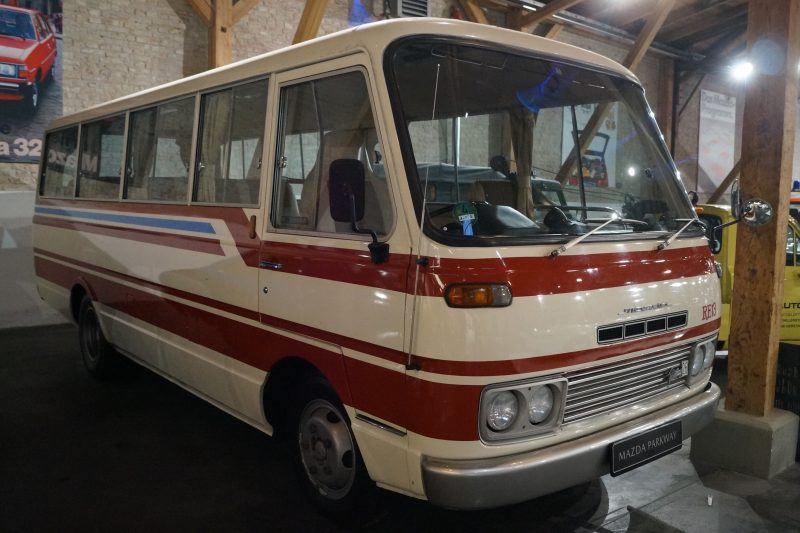
However, there was one small problem: Even though the rotary minibus was ahead of its time emission-wise, fuel efficiency was still a problem. When fitted with the optional air conditioning, another 1,000cc reciprocating engine was required. In combination with the two 70 litre fuel tanks which were needed due to the high fuel consumption of the rotary engine, vehicle weight increased by about 400kg, raising fuel consumption even further.
The high running costs led to very small production numbers since small businesses couldn’t afford the rotary powered Parkway. Up until 1976, just 44 units were produced, making it super rare among all the rotary cars manufactured – and a bizarre phenomenon in the history of Mazda vehicles. A new generation of Mazda Parkway rolled onto the dealers’ forecourts in 1982, this time without the little successful rotary version, and was sold until it was discontinued in 1995.
A Parkway story
Even though the Parkway Rotary is super rare – with just 44 ever being produced – the Frey family from Augsburg managed to acquire an example of the rotary powered bus for their Mazda Classic Museum. This was quite the adventure: “A friend of a friend knew someone in Japan who had one for sale,” Joachim Frey remembers. “Thus, without hesitation, we got in touch with the dealer and bought the bus sight unseen. Not knowing what surprises might await us, we had the bus shipped to Rotterdam harbour, where we were finally able to take receipt of the rare vehicle. Of course, the bus needed some work, but it started right away and was driven to Augsburg under its own power.”
Since then, the Parkway has been up and running, impressing the visitors of the Mazda Classic Museum in Augsburg. “The Parkway Rotary was formerly used as a school bus and is a highlight of our collection. It provides a very different driving sensation. You have the turbine-like feeling of the rotary engine and even though it is a bus, it really behaves like a car. It’s a very easy and comfortable drive,” says Joachim Frey. And still to this day the family keeps up friendly relations with the seller of the Parkway Rotary, as Joachim explains with a smile: “We have nicknamed him ‘bus-man’ and he even introduces himself like that when we talk on the phone.”
Read more on the Mazdas that worked for a living here – from vans, trucks, buses and pick-ups.

